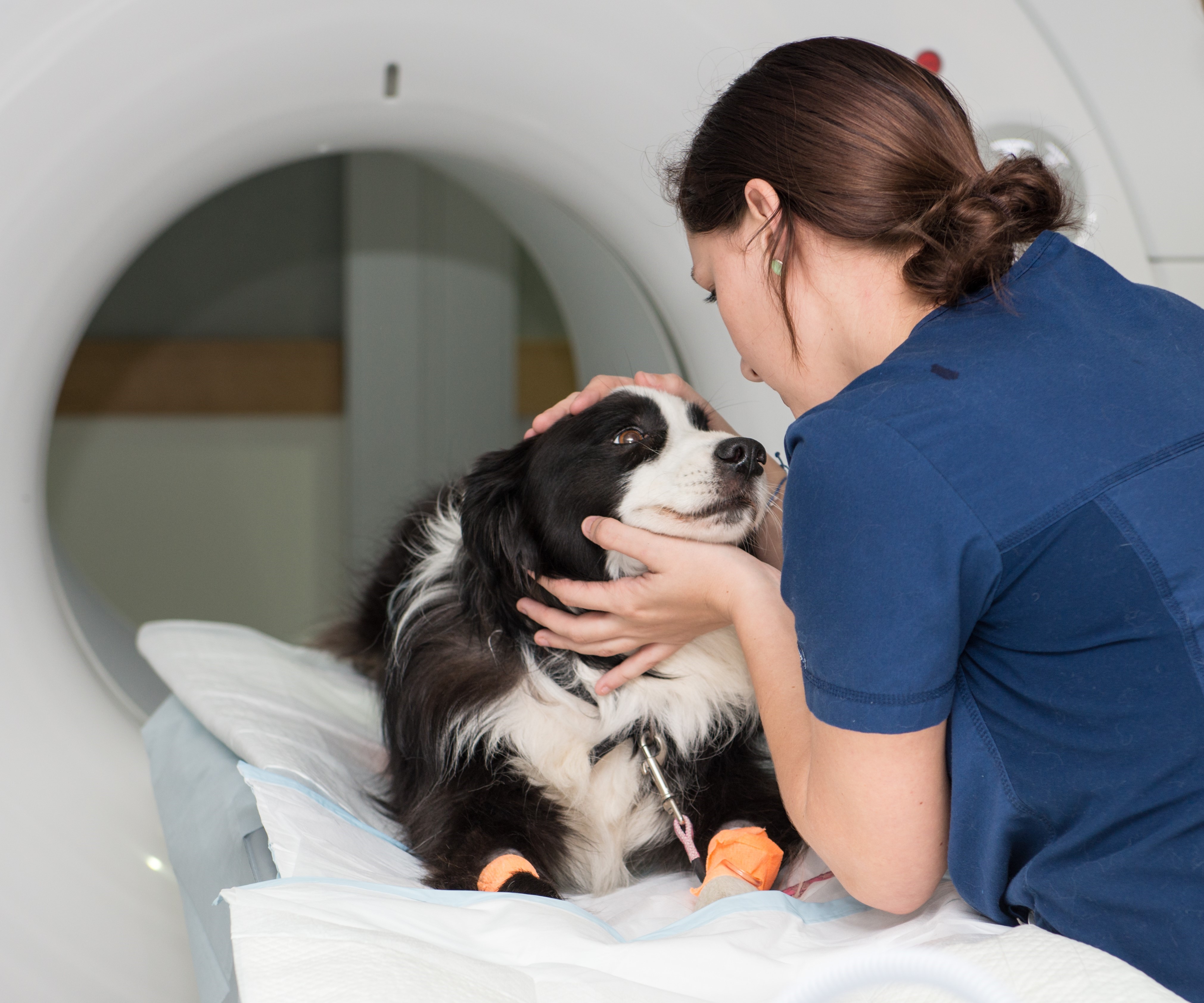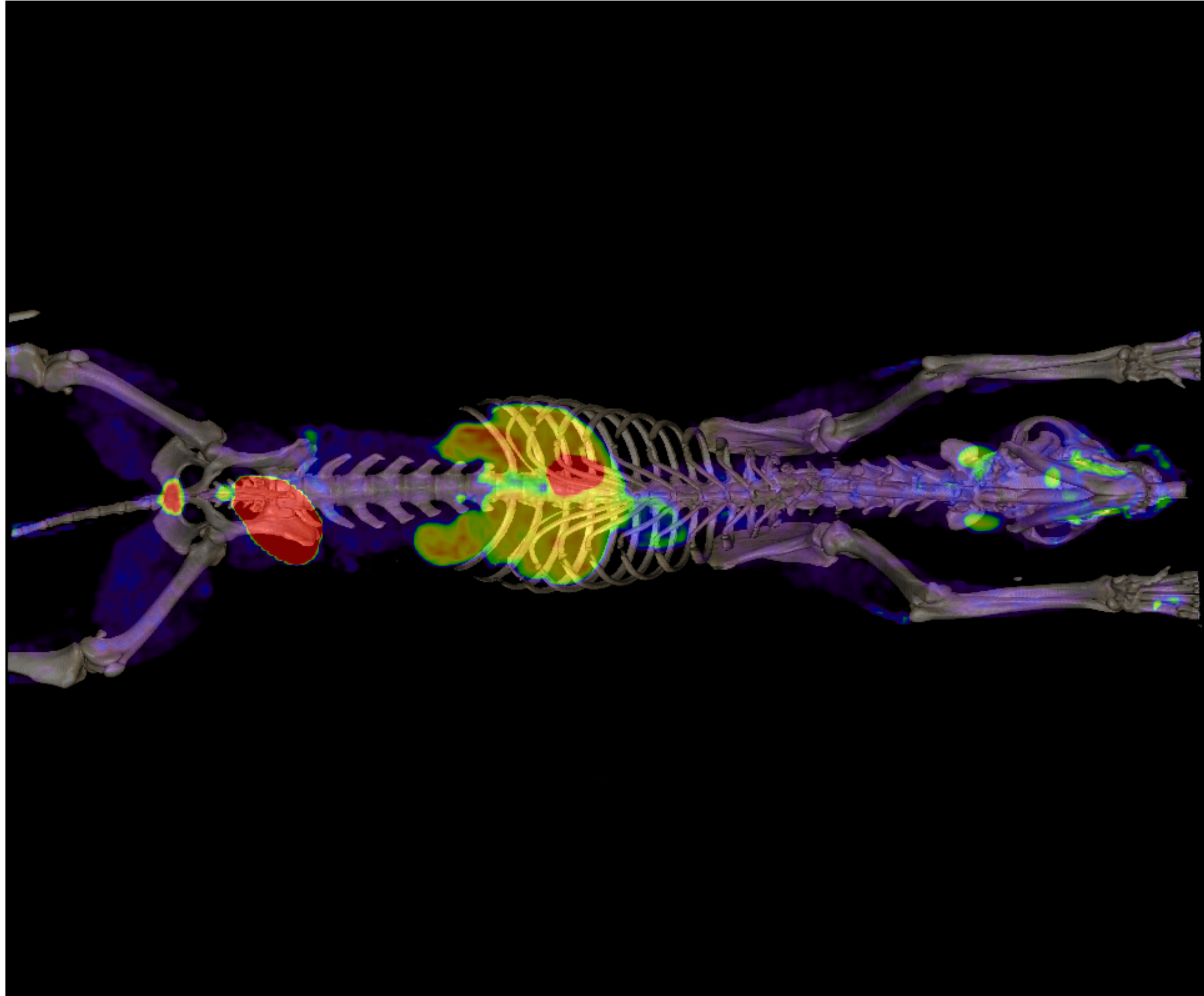Australia has taken an important step forward in cancer research with help from some of our furry friends.
The University of Queensland’s Centre for Advanced Imaging (CAI) has performed the first dog PET-CT FDOPA scan in Australia.
CAI’s Nuclear Medicine scientist Sarah Daniel said the scan was performed as part of a comparative oncology program that aims to fast-track drug development and diagnostic imaging agents for human cancers, with developments also aiding canine patients and veterinary medicine.
“When Lucas, a seven-year-old border collie, was brought to veterinary specialists with low blood sugar or hypoglycaemia causing seizures, special scans to detect cancer were required,” she said.
“PET-CT scans combine the technologies of positron emission tomography (PET) and computed tomography (CT), and the tracer 18 F-FDOPA was used for Lucas’ scan.
“Extending this powerful technology to companion animals like Lucas is a new frontier in Australia.”
Director of the Brisbane Veterinary Specialist Centre (BVSC) and Lucas’ vet Dr Rod Straw said that the scan was a tremendous diagnostic aid and following successful surgery, Lucas’ blood sugar problems have been resolved.
“Many cancer types found in dogs and cats are very similar to the cancers found in humans,” Dr Straw said.
“For this reason, researchers can learn how to improve the treatment of human cancer from the knowledge gained when helping pets.
“The Comparative Oncology Program is great because dogs and cats are able to receive state-of-the-art care and we also learn how to improve the treatment of human cancer.
“What we learn from helping our pets can also fast-track human trials.”
PET for pets: an Australian first to advance cancer treatment from The University of Queensland on Vimeo.
Lucas’ owner Martha Yáñez said she was happy with her pet’s prognosis.
“This scan was very important to save Lucas’ life,” she said.
“A pet is really part of your family and so loved. You would really do anything and go as far as you have to, to save them.
“Lucas has since recovered quickly and is back playing with our geese and ducks!”

Lucas and a BVSC member share a cuddle

CAI Nuclear Medicine Scientist, Sarah Daniel, checks
Lucas before commencing the scan

PET-CT body scan of Lucas with the tracer 18F-FDOPA

Lucas with owner, Martha Yáñez
Media: CAI - Professor David Reutens, cai_pa@uq.edu.au, +61 (7) 3365 4237
@UQ_CAI, @SarahDanielCAI;
BVSC - Dr Rod Straw, rods@bvsc.com.au, +61 (7) 3264 9400
Media enquiries: Maria Moran, maria.moran@cai.uq.edu.au, +61 (7) 3365 1785
Additional media:
UQ News full article



